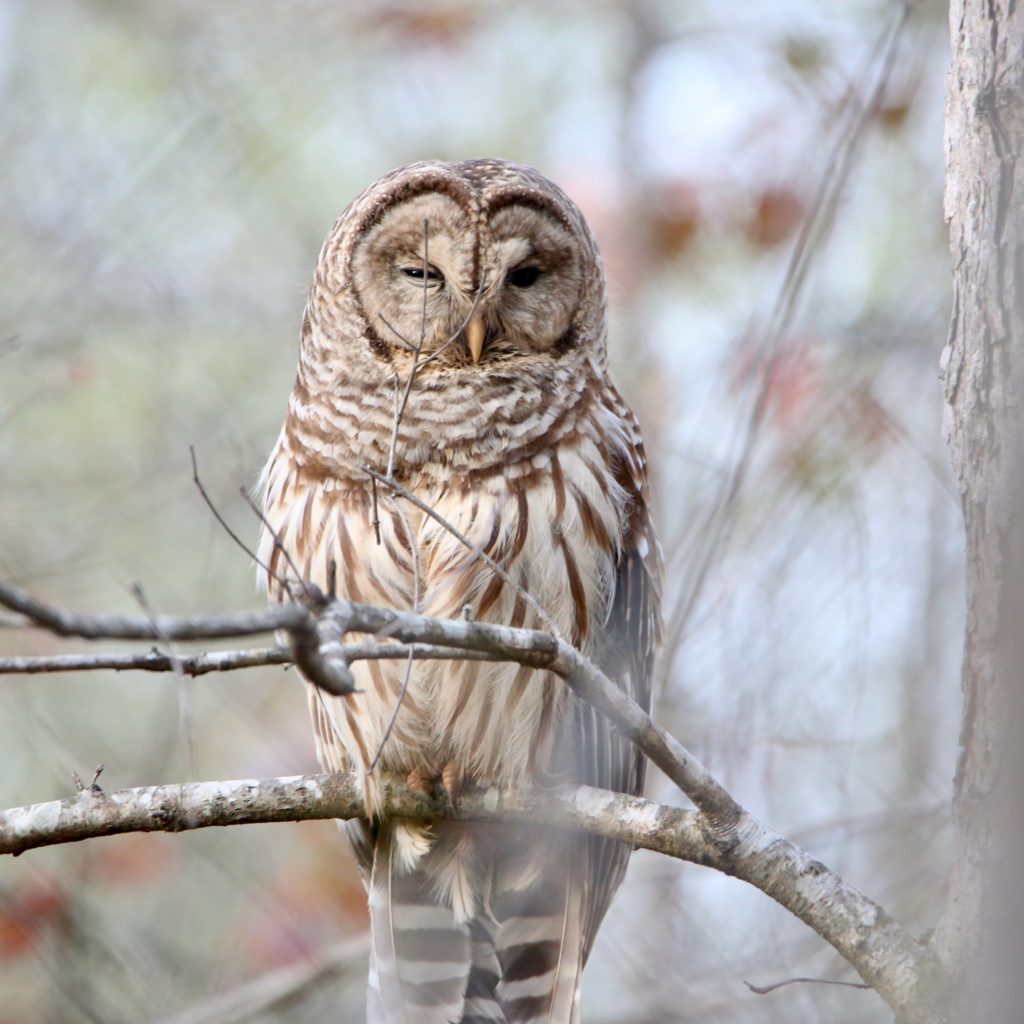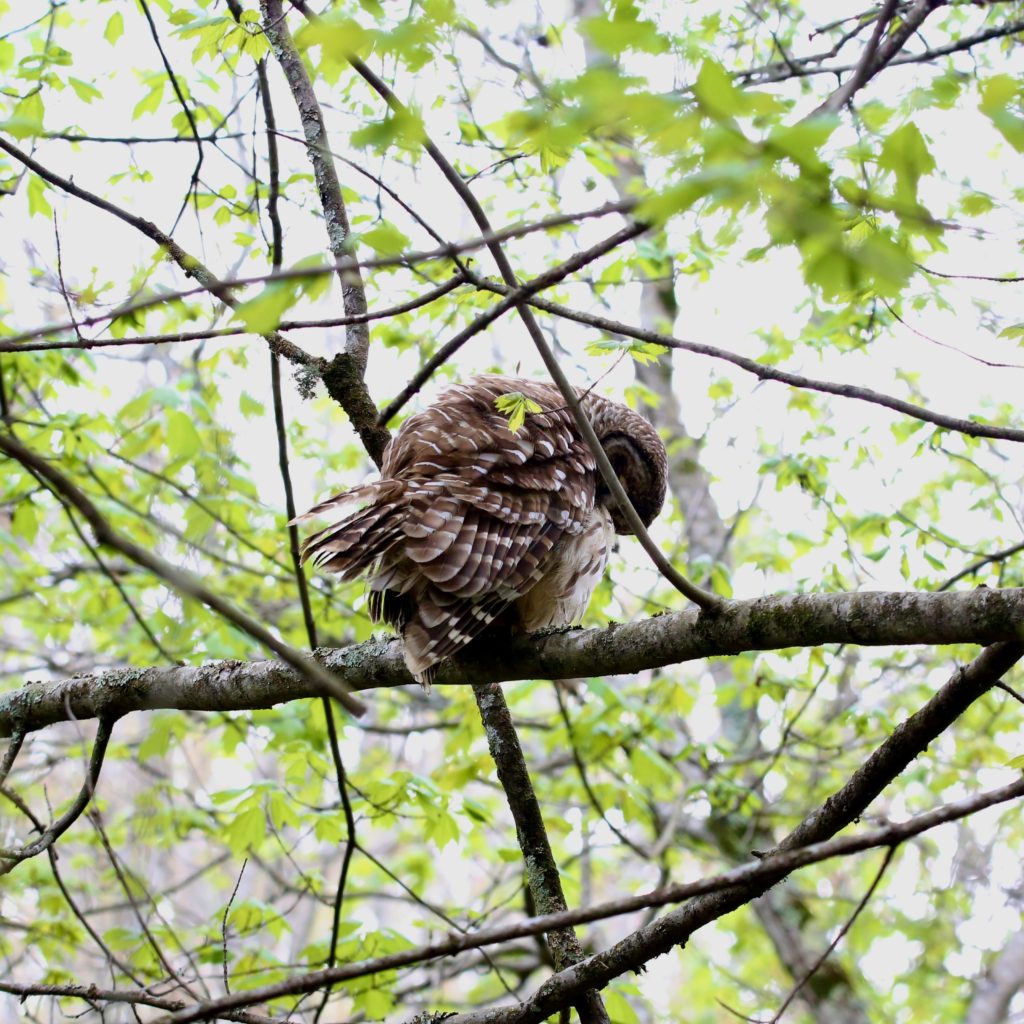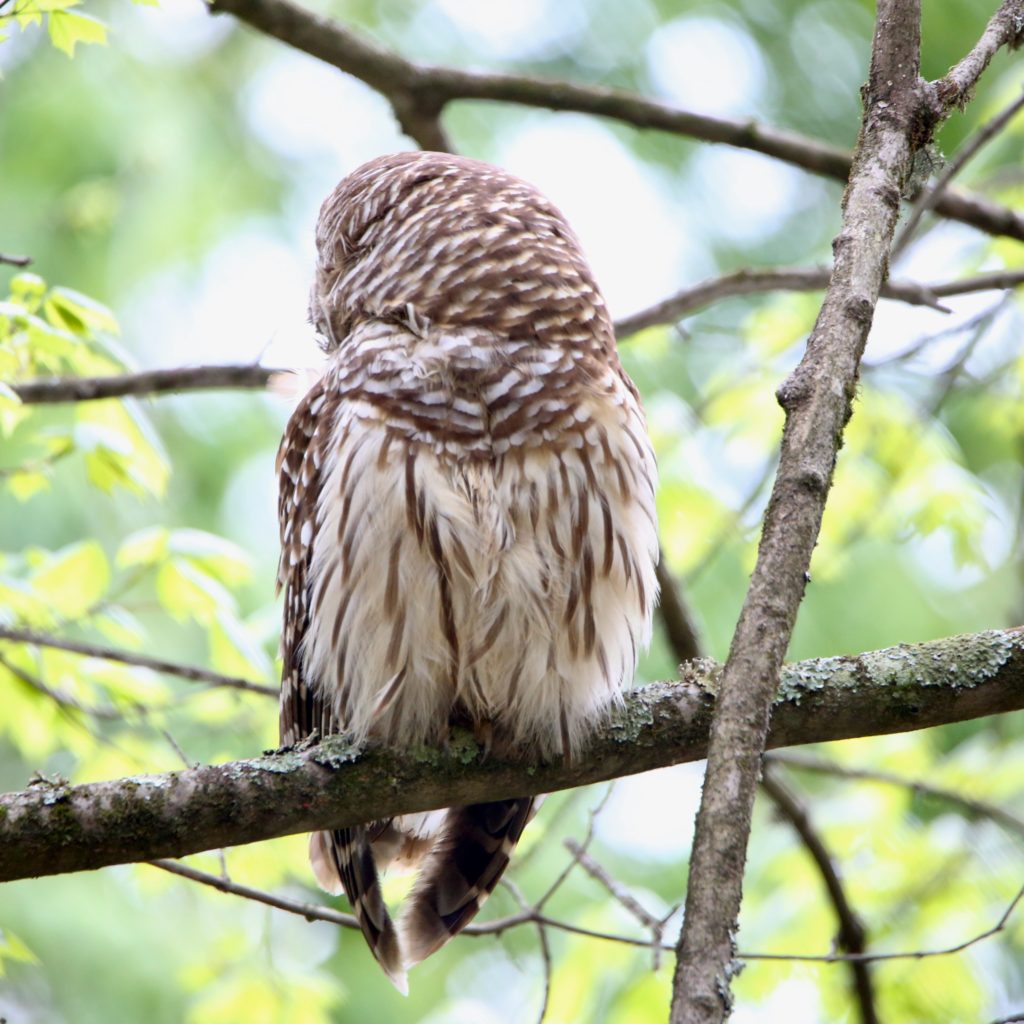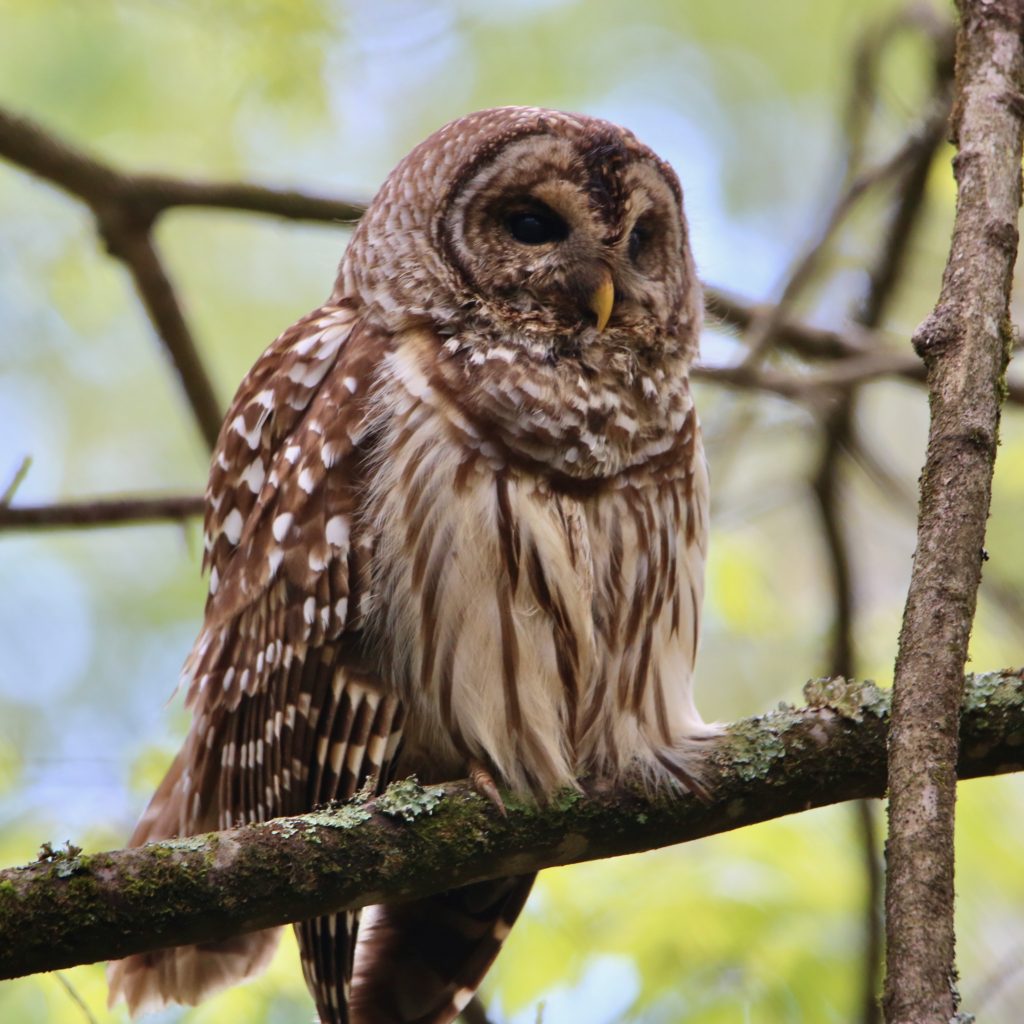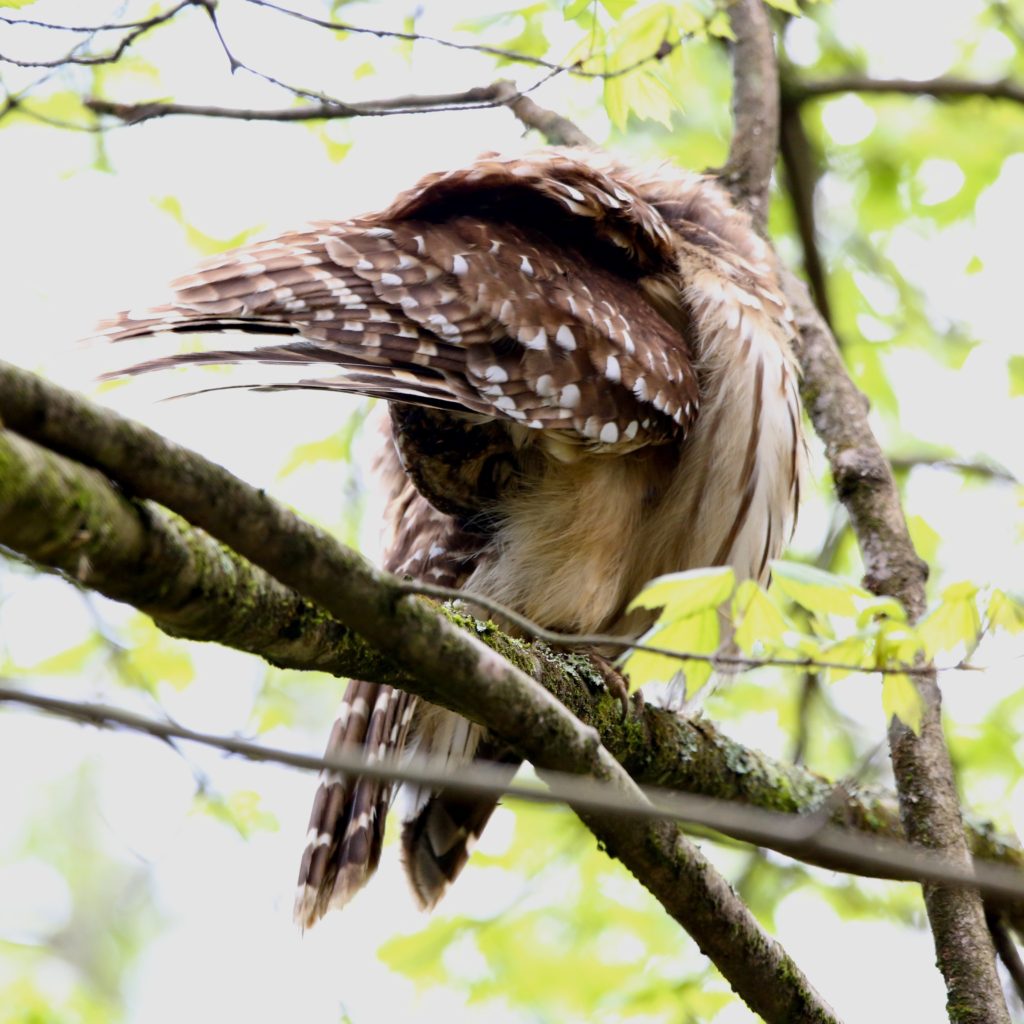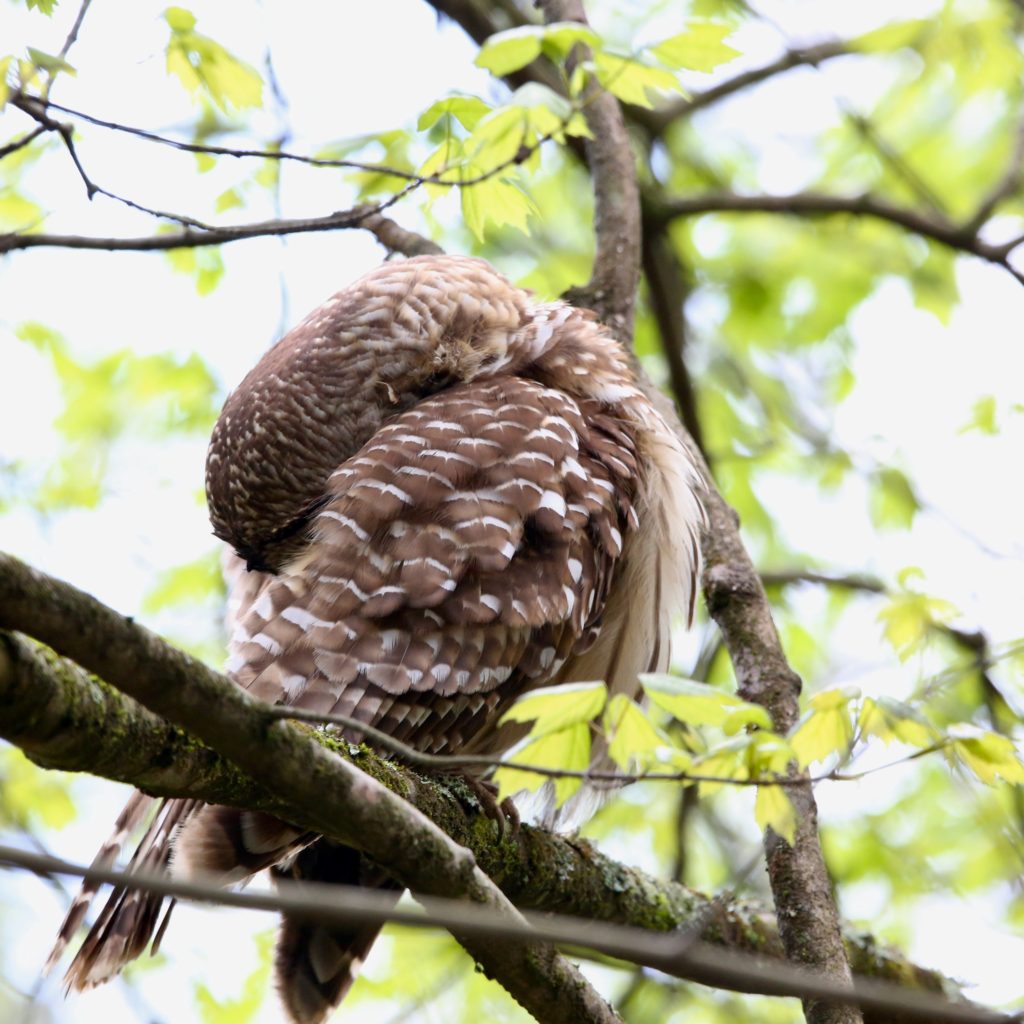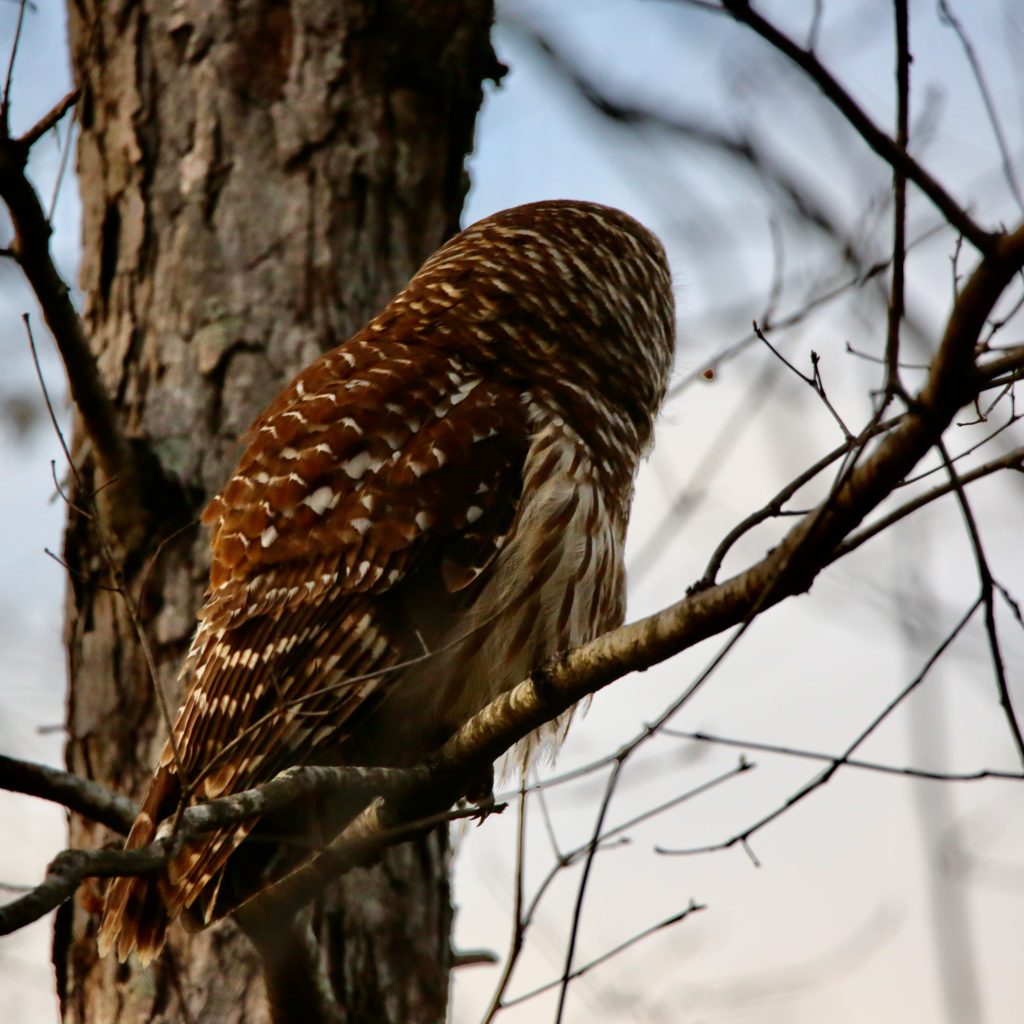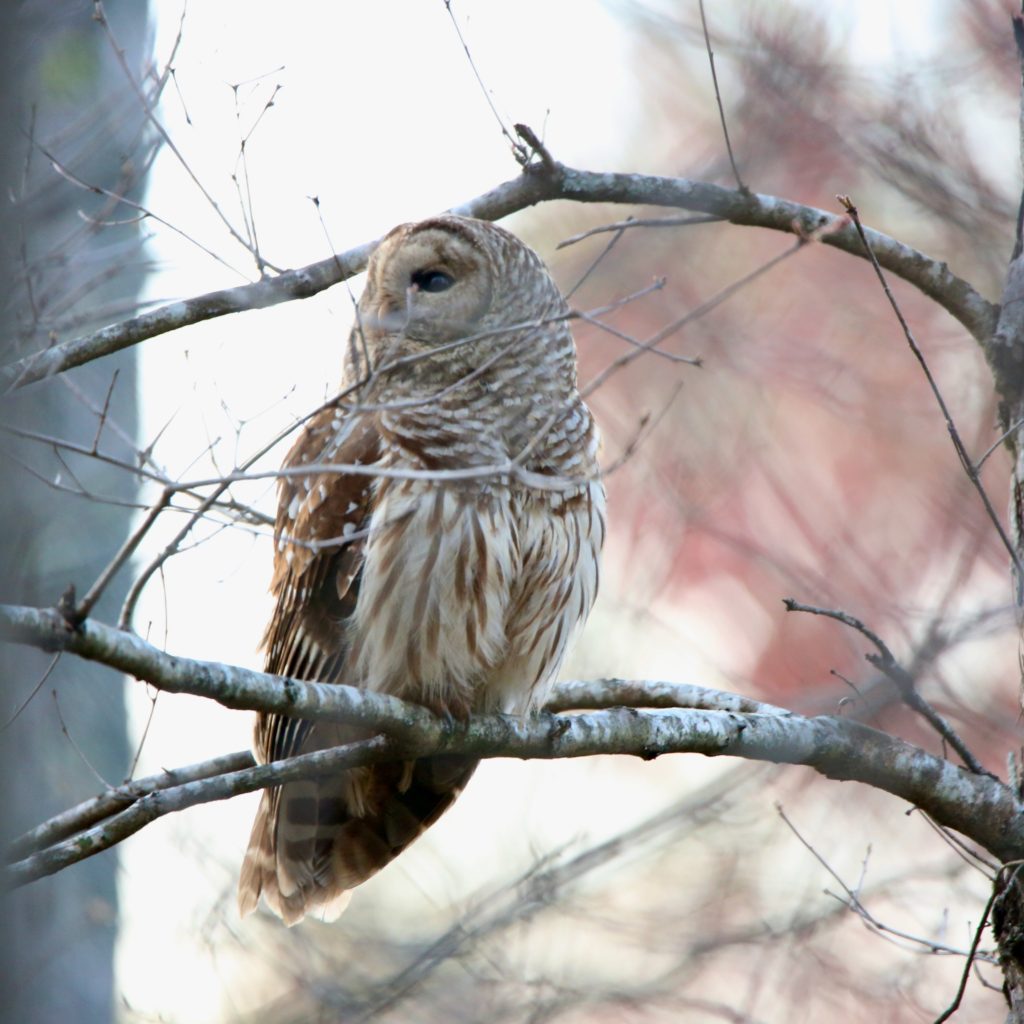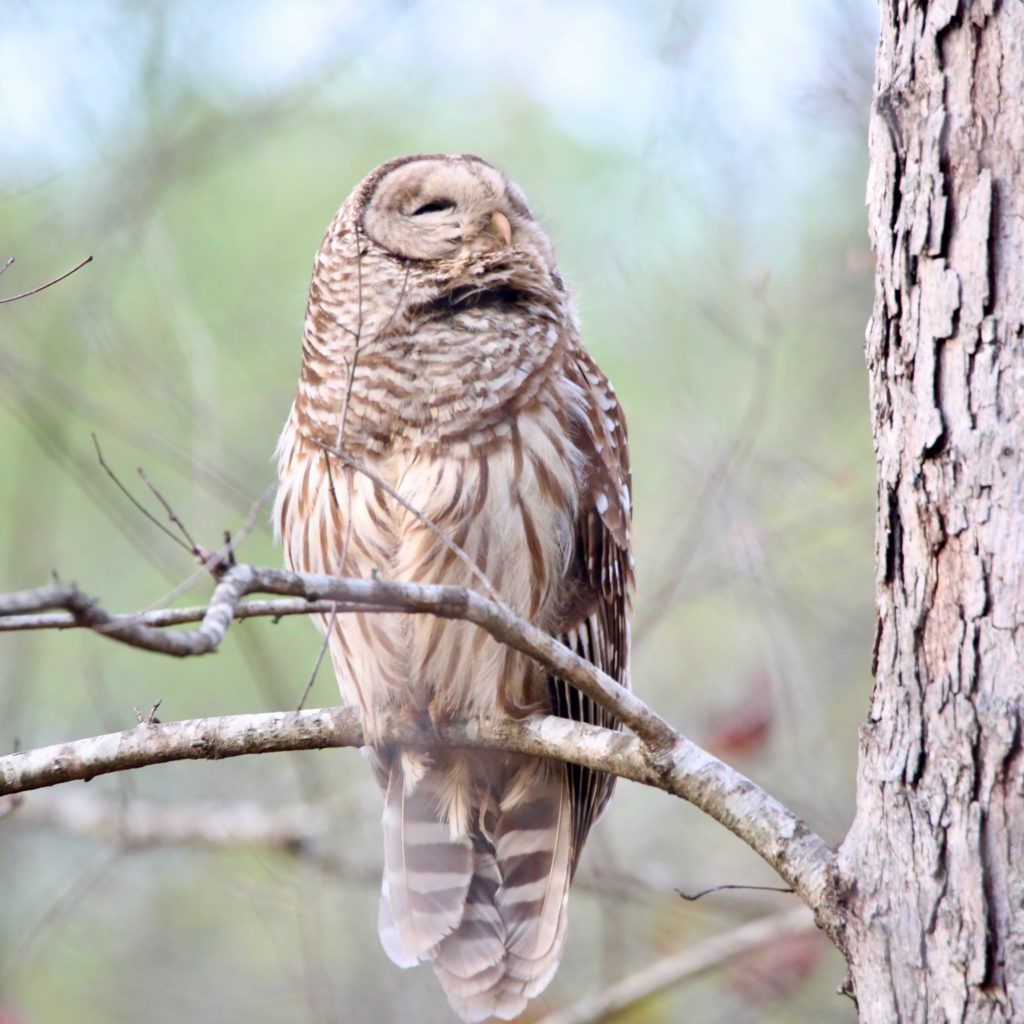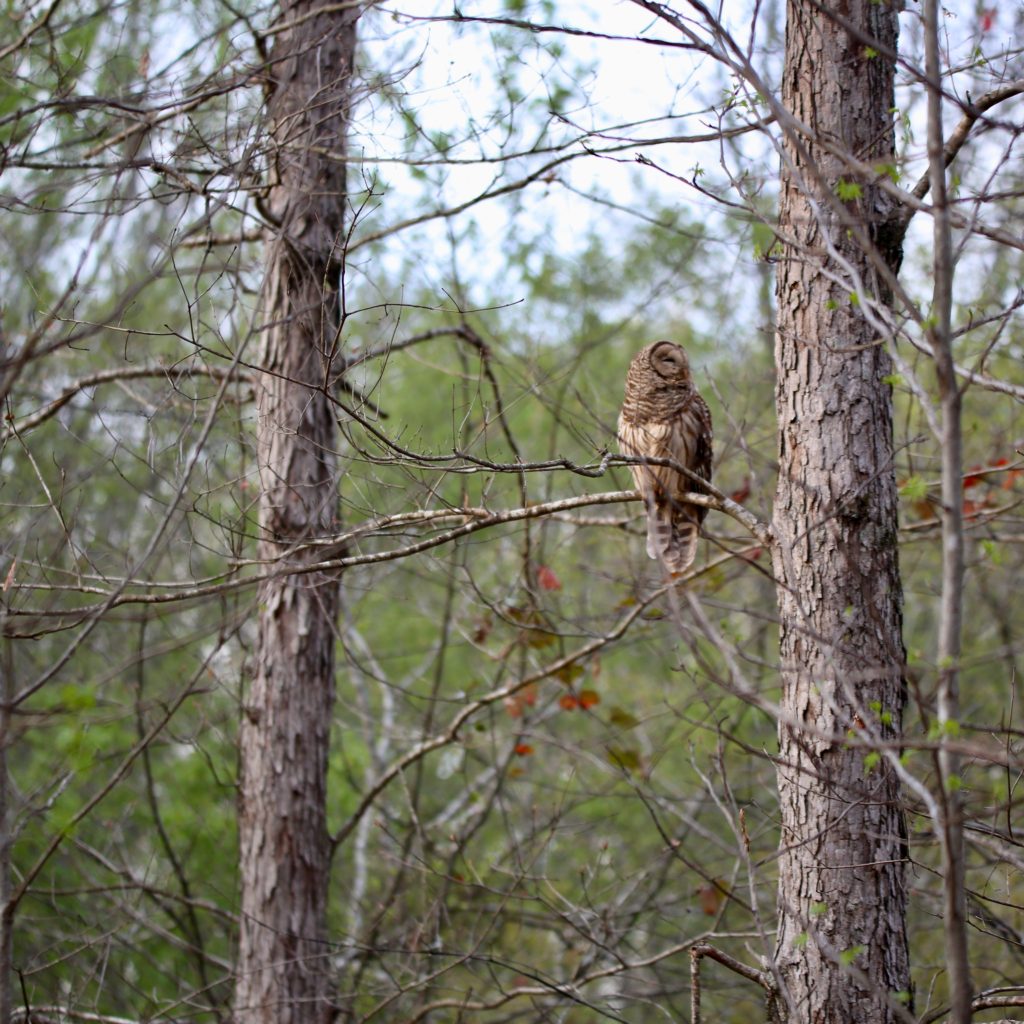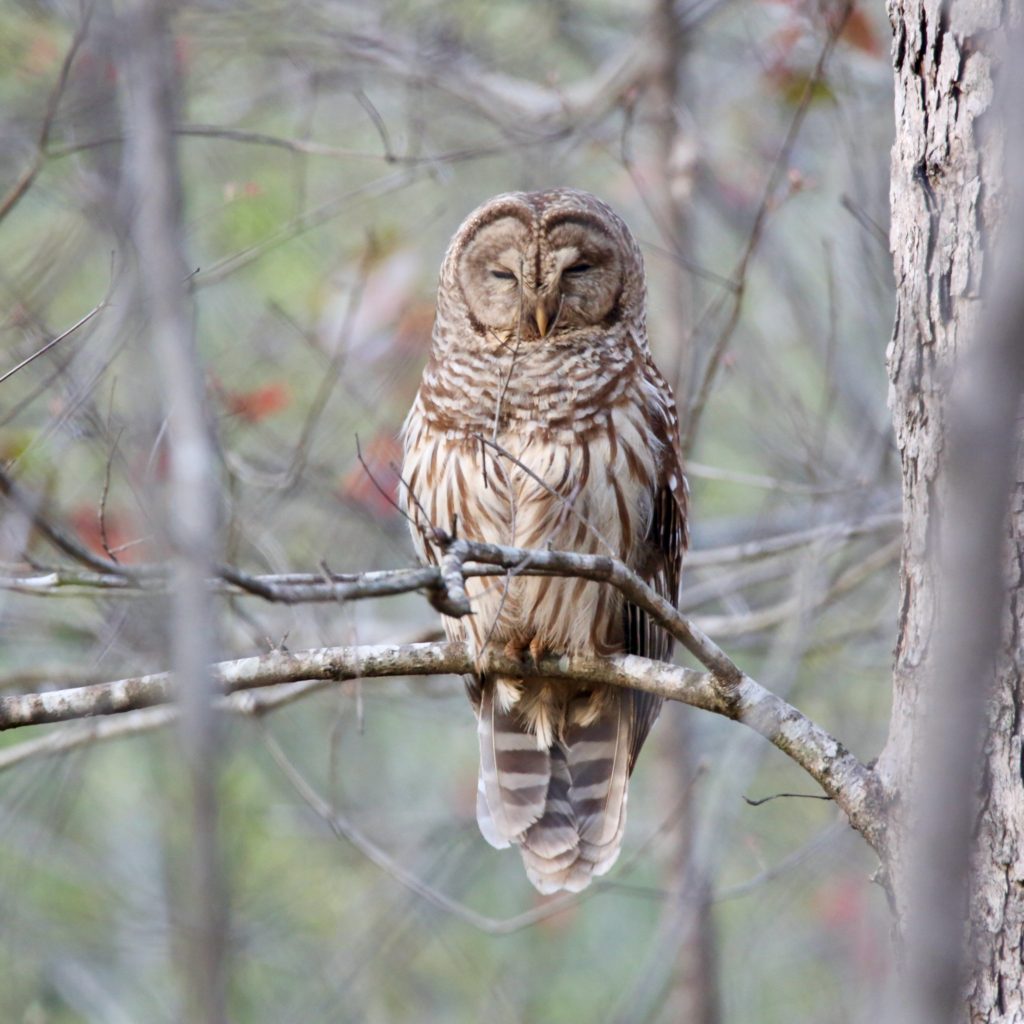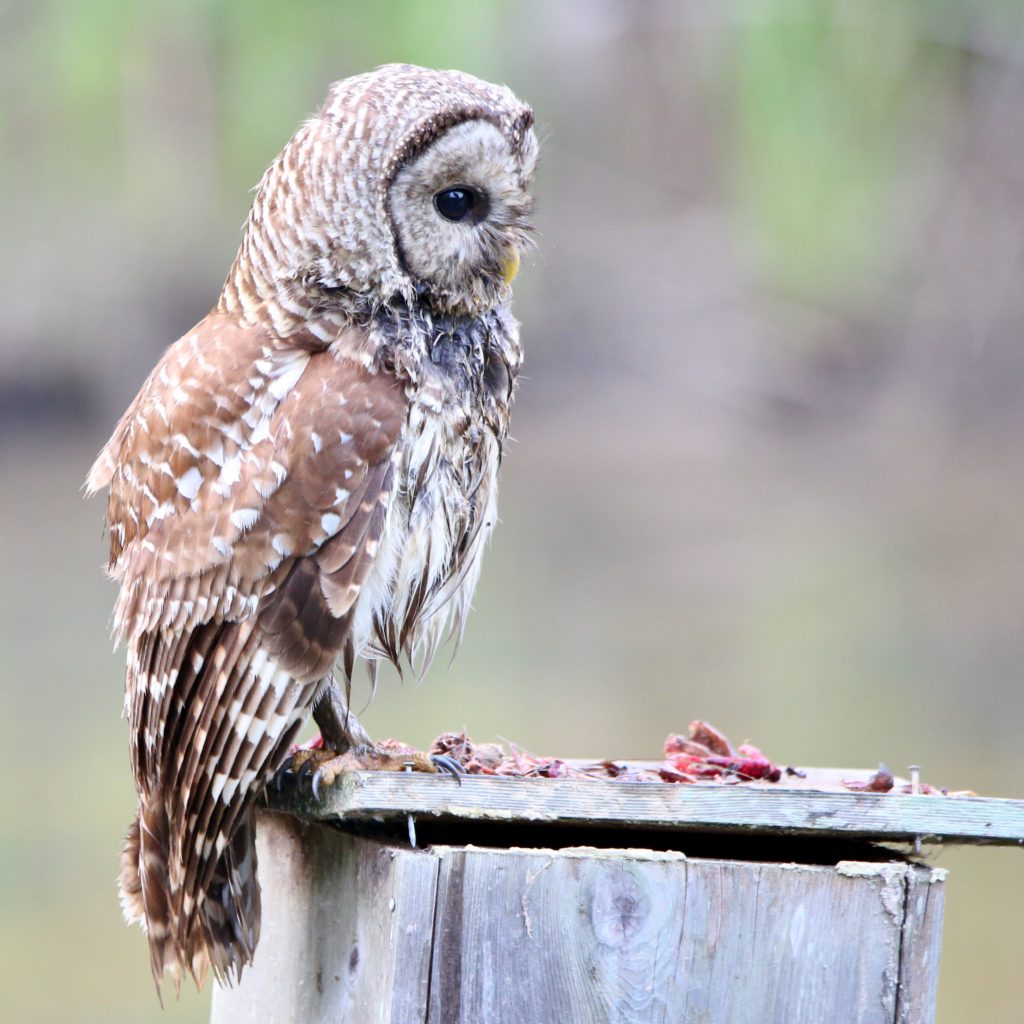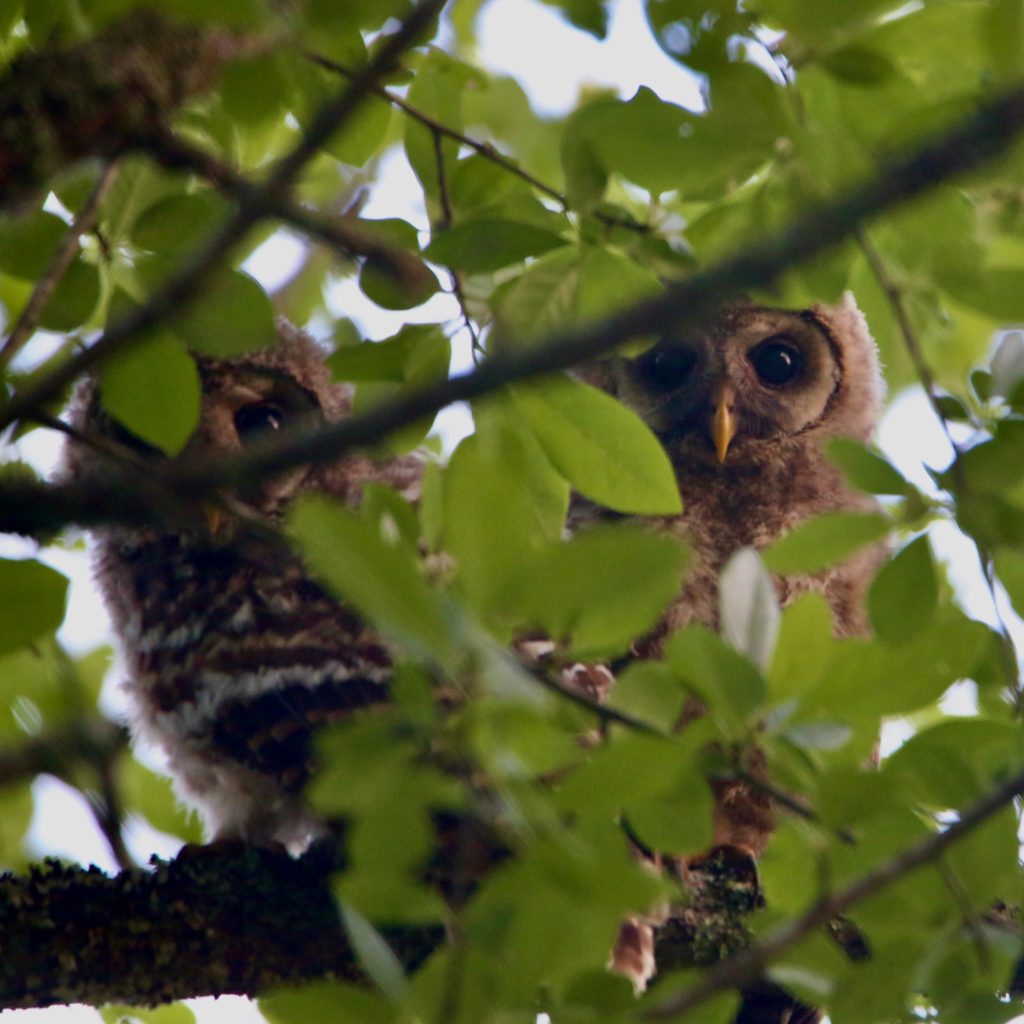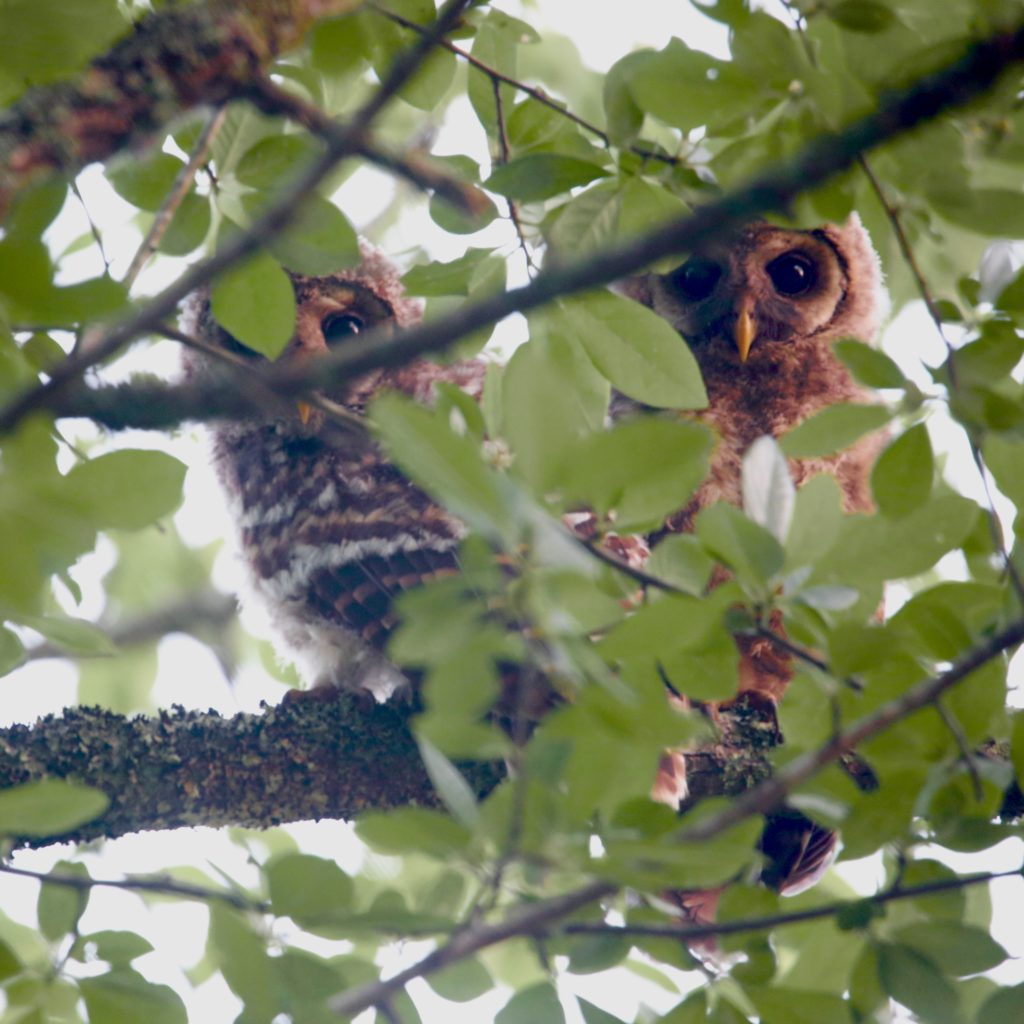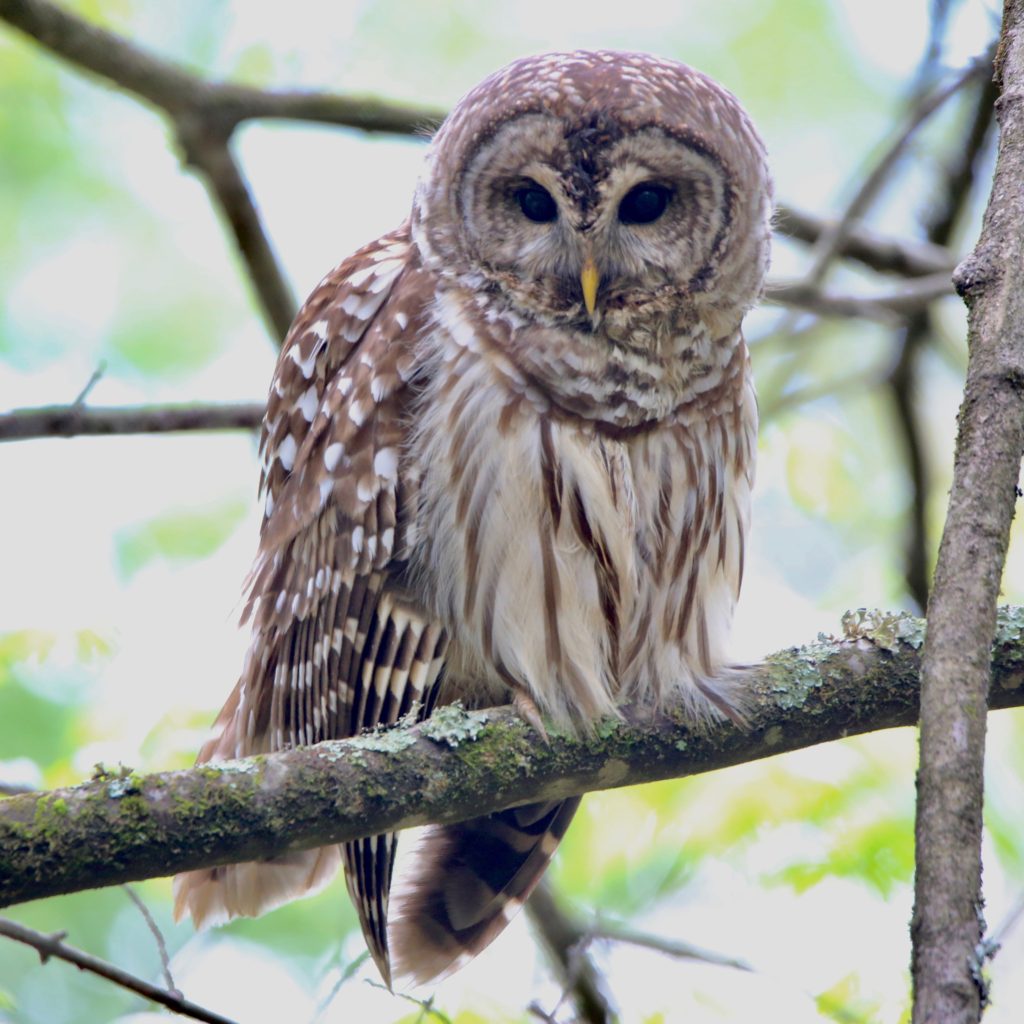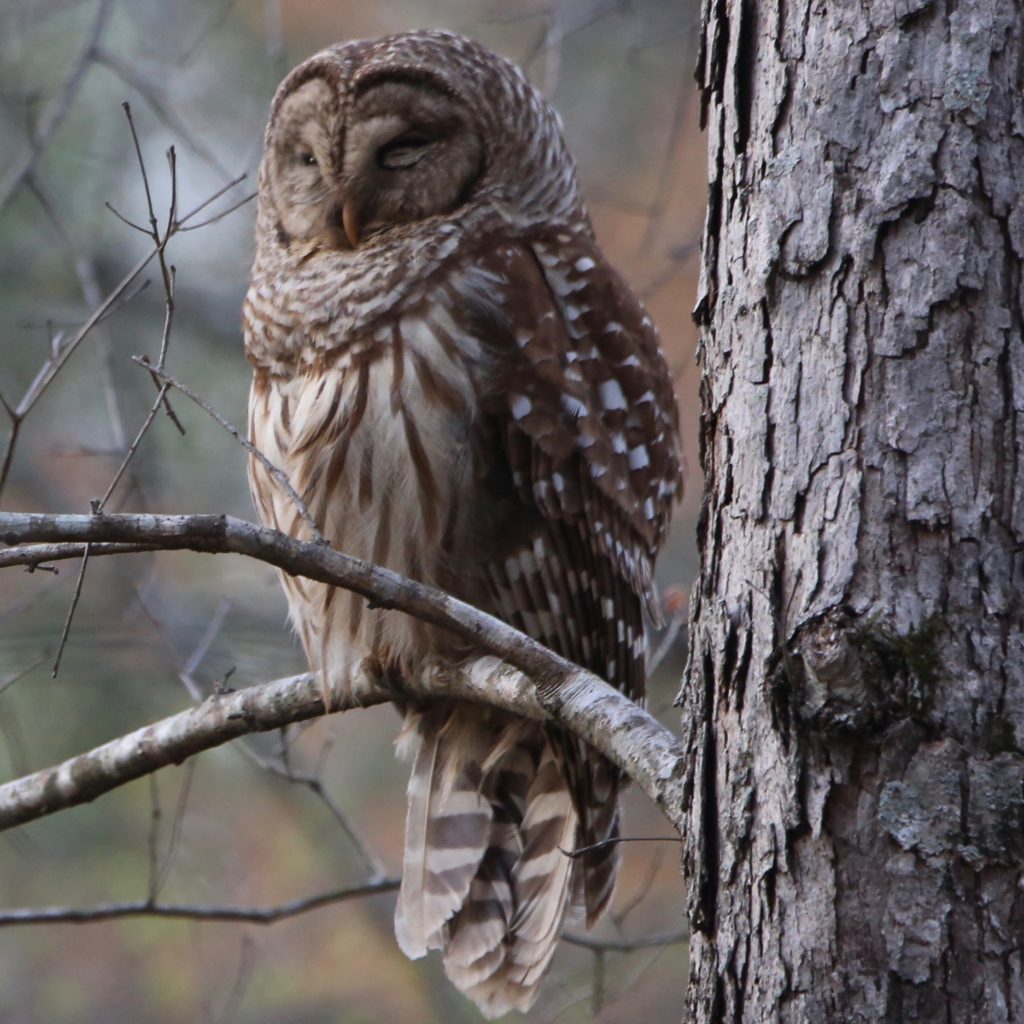
A Barred Owl is a fun bird to see while bird watching. Below are some tips to help you identify Barred Owls. We have also put together a list of fun Barred Owl T-shirts, Barred Owl bird patches, bird houses, bird feeders, binoculars, stickers and other fun bird watching items.
About Barred Owls
The Barred Owls are known for their classic hooting call, “who cooks for you?” in old forests and southern swamps. Although active at night, they hunt and call during the day too. They are easier to hear than to see when active. Although they are originally from the east, through the years they have spread southward into California.
Description and Identification
Barred Owls are identified as birds with brown and white feathers all over the body with horizontal brown marks on the white surface around their breast. Barred Owls have black or very dark brown eyes making them easily distinguishable from other owls who have yellow eyes. The horizontal brown bars or lines over the white background near the breast area give the owls their popular name “Barred Owl”. The big dark brown and black eyes make Barred Owls visible even from a distance. Their sharp beak helps them hunt and catch their prey with great speed and strength. Northern Barred Owls are usually different because of their brown eyes which are not very common in other species of owls.
Barred Owl Color Pattern
Barred owls are primarily brown and white. They have brown upperparts with buff-white spotting and buff-white underparts with dark brown bars on the breast and vertical brown bars on the belly. Their eyes are almost black distinguishing them from the other owls. Their legs are brown feathered and the tail and wings are barred brown and white.
Barred Owl Size
They are larger than a barn owl but dwarfed by a great horned owl. They have rounded tails, rounded heads, and no ear tufts. Both sexes are 16.9-19.7 inches in length and weigh 16.6-37 ounces. They have a wingspan of 39-43.3 inches.
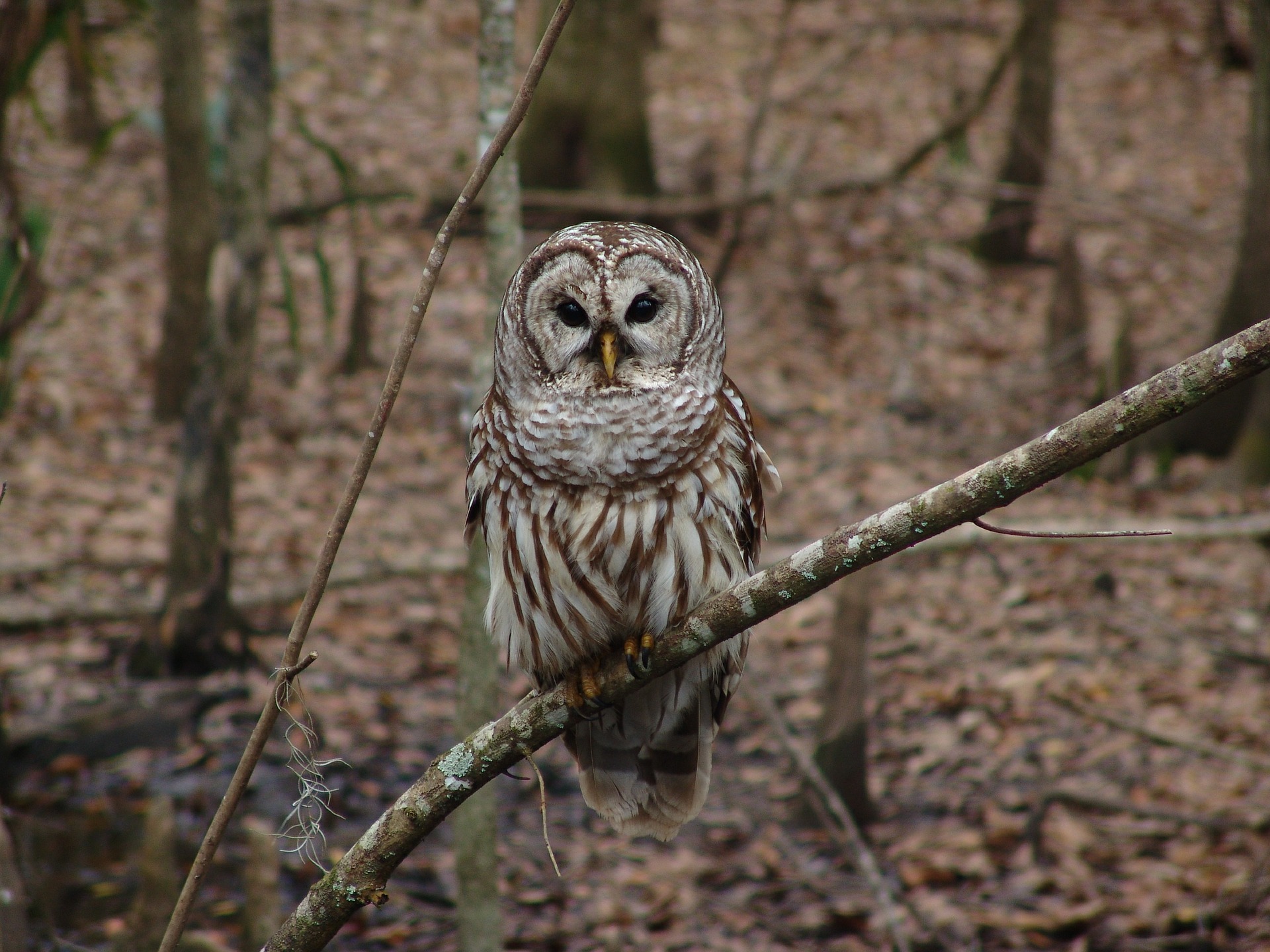
Barred Owl Behavior
They hunt by night and day, they hunt small animals such as rodents. They search for prey by watching from perch. Barred owls can be heard calling in the night and day and are less aggressive compared to their relatives. They can also search for prey by flying low.
Barred Owl Diet
Barred Owls are nocturnal predators who eat small rodents, amphibians, fish and mammals like bats. They are opportunistic hunters which means they are fast creatures with great hunting skills. They hunt in the same habitat for life and don’t migrate for food. Once they encounter prey, they change their hunting strategies to capture it, despite them not looking for that. Usually while hunting they perch on the topmost branches and their incredible eyesight allows them to spot moving prey quite easily. They dive down on the prey and stomp it with their powerful feats.
They mostly feed on small animals such as mice, squirrels, rabbits, and other small animals. Barred owls also eat insects, lizards, snakes, frogs, and birds. These owls sometimes wade on the water to catch fish and other aquatic creatures.
Barred Owl Habitat
Barred Owls are nocturnal predators who prefer thick canopy of dense forests. Barred Owls prefer deciduous forests or even coniferous forests located on banks of lakes or swamps. They also prefer treeline bordering small clearings with long grass where they can hunt for small rodents. Barred Owls are stationary birds and don’t migrate at all. Barred Owls hide in dense foliage, usually high up in trees during the day. They also roost inside natural holes in broad tree-trunks. Their favorite nesting spaces are small cavities in tree trunks or abandoned Hawk or Crow nests. They protect these nests with fierceness.
Barres owls thrive in mature forests with plenty of deciduous trees and evergreens. They often nest in large hollow trees or on abandoned crow or hawk nests. In the Northwest, they share their habitat with the spotted owl in coniferous forests.
Range and Migration

Barred Owls are popularly known as Northern Barred Owls and are found in large numbers across the North American region. Barred Owls are not migratory birds and they do not travel large distances. However, they increase their living area and range after a long duration in a region. The area Barred Owls cover in the North American region is relatively small. They also do not travel in search of food or shelter or because of change in season. They only travel 6 miles away from their place of origin. Barred Owls fall under the category of non-migratory birds.
Nesting
Barred Owls don’t build their nests but they prefer to live in the natural cavities of tall trees. Barred Owls prefer to live at great heights around 40 feet but they also live in human-made nests. Barred Owls sometimes also take the already built nest of other animals and make it their own. Barred Owls are protective birds and they usually protect their nests for a year before actually living in them.
Barred Owl Lifecycle
The females lay 2-3 eggs and incubate them for 28-33 days, incubation is mainly by the female. At this period, the male brings food to the incubating female. Young ones fledge after 6 weeks. They can live for up to 24 years in the wild.
Ornithology
Bird Watching Academy & Camp Subscription Boxes
At the Bird Watching Academy & Camp we help kids, youth, and adults get excited and involved in bird watching. We have several monthly subscription boxes that you can subscribe to. Our monthly subscription boxes help kids, youth, and adults learn about birds, bird watching, and bird conservation.
- Kids Bird Watching Monthly Subscription$10.00 / month
- Kid & Adult Bird Watching Starter Pack Subscription$10.00 / month and a $72.00 sign-up fee
- Kids Bird Watching Starter Pack Subscription$10.00 / month and a $19.00 sign-up fee
Bird Watching Binoculars for Identifying Barred Owls
The most common types of bird watching binoculars for viewing Barred Owls are 8×21 binoculars and 10×42 binoculars. Bird Watching Academy & Camp sells really nice 8×21 binoculars and 10×42 binoculars. You can view and purchase them here.
Barred Owl T-shirts
If you love the Barred Owl you should purchase a Bird Watching Academy & Camp T-shirt. To help support bird conservation we donate 10 percent to bird conservation activities.
Barred Owl Iron On Patches
Kids, Youth, and Adults love to collect our Bird Watching Academy & Camp iron on patches. Our bird watching patches help you keep track of the birds you have seen and identified. You can also display the patches on our Bird Watching Academy & Camp banners.
The Barred Owl is a great iron on patch to start your collection with. The patches are durable and can be sewn on or ironed on to just about anything.
- Barred Owl Iron on Patches$2.99
- Bird Banner$10.99
Barred Owl Stickers
Stickers are a great way for you to display your love for bird watching and the Barred Owl. We sell a monthly subscription sticker pack. The sticker packs have 12 bird stickers. These sticker packs will help your kids learn new birds every month.
Bird Feeders For Barred Owls
There are many types of bird feeders. Bird feeders are a great addition to your backyard. Bird feeders will increase the chances of attracting birds drastically. Both kids and adults will have a great time watching birds eat at these bird feeders. There are a wide variety of bird feeders on the market and it is important to find the best fit for you and your backyard.
Best Bird Houses For Barred Owls
There are many types of bird houses. Building a bird house is always fun but can be frustrating. These 4 bird houses have become our favorites. Getting a bird house for kids to watch birds grow is always fun. We spent a little extra money on these bird houses but they have been worth the higher price and look great.


